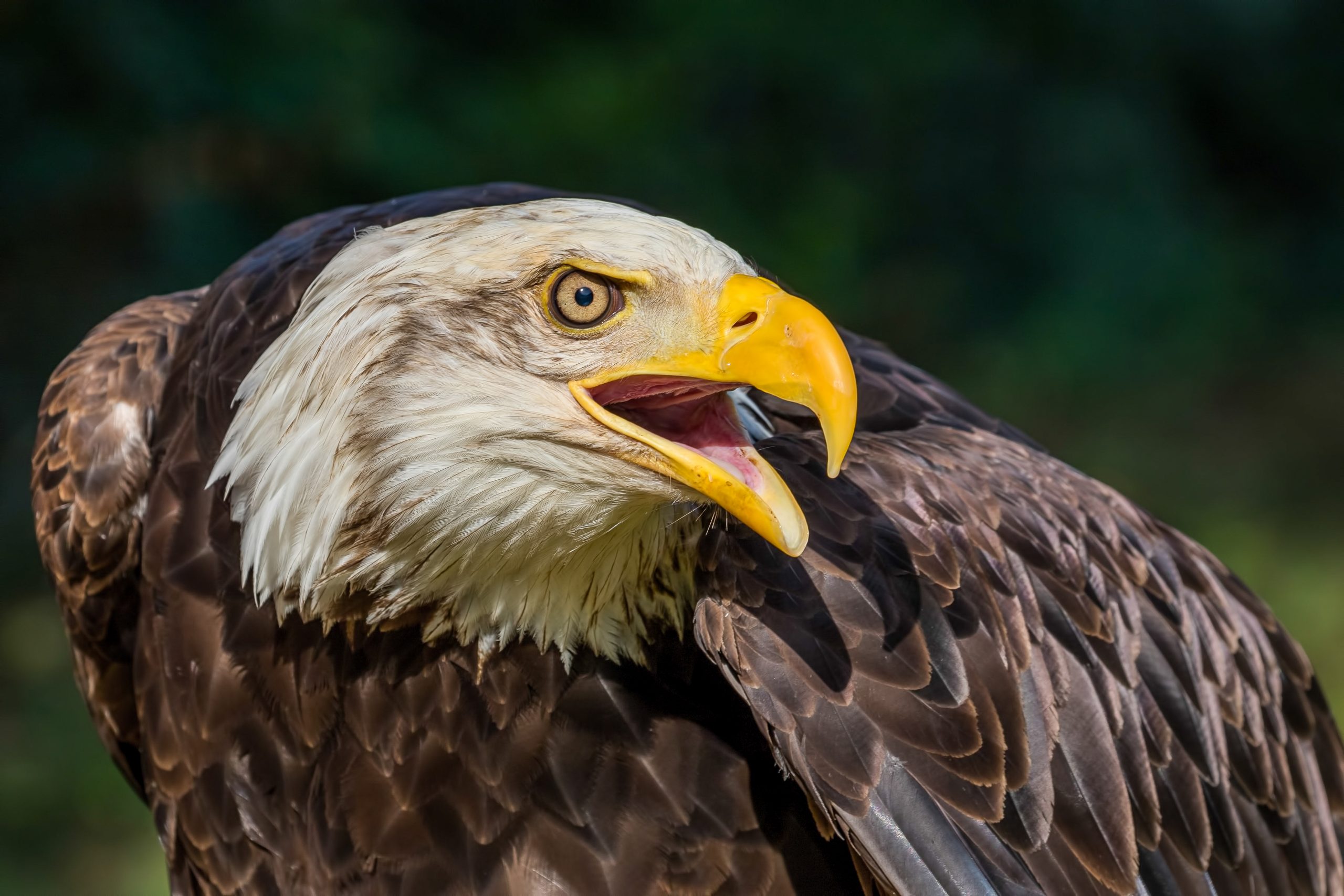MR. LINCOLN
Species: Haliaeetus leucocephalus, Bald Eagle • Hatch Year: 1998 • Sex: Male • Disability: Human Imprint
Mr. Lincoln was hatched at the American Eagle Foundation’s Eagle Mountain Sanctuary. He was raised by his parents, a non-releasable breeding pair named Liberty and Justice, until eight weeks of age and was then taken along with his siblings to the AEF’s hacking tower on Douglas Lake.
After Mr. Lincoln was released, he flew 550 miles during his first two weeks in the wild! Shortly after, he was seen stealing fried chicken off a boat dock in Indiana. He then lived off bacon for a while in Michigan—compliments of the family who owned the backyard that Lincoln frequented. Because Lincoln never learned to hunt, only scavenge, he became very hungry and weak.
In September 1998, he was captured, fed to a healthy weight, and returned to his hometown in Tennessee. He was put into a large enclosure with a live rabbit to see if he was capable of capturing his own food,unfortunately this was not the case. Because Mr. Lincoln proved incapable of being able to hunt, U.S. Fish and Wildlife deemed him non-releasable and the AEF became his permanent home.
Since then, Mr. Lincoln has been seen by thousands of people during education programs and has been trained to fly in ballrooms and outdoor events during the National Anthem!
ABOUT THIS SPECIES
Bald Eagles were placed at the center of the Great Seal of the United States in 1782! Since then, they have served as the pride of America’s skies and the symbol of all that America stands for.
Bald Eagles obviously aren’t bald! “Bald” in this sense refers to an Middle English word that means “white headed.” When eagles fledge the nest at between 10 and 13 weeks of age, they are primarily all brown. An Eagle gets its full white head and tail feathers and yellow beak and eyes at around four to five years of age.
Bald Eagles typically mate for life. Usually, they will only look for a new mate if their faithful companion dies, but sometimes a new mate is chosen in a territorial fight over a nest.
In building a nest, Bald Eagles will choose a ‘super-canopy’ tree—one rising above the rest— near to water, with sturdy limbs and a commanding view of the surrounding terrain. Typical nest heights are 50-125 feet high. They make use of twigs, grasses, soft mosses and feathers in making their nests and normally return to the same nest each year during breeding season and add new materials to it. A new eagle pair’s nest usually measures about five feet in width and two feet in depth. As they add to it year after year, however, it can reach widths of over ten feet and weigh up to a ton or more. On the Channel Islands, where large trees are very scarce, Bald Eagles have built their nests on cliffs; and, in some coastal areas of Alaska and Canada where there are few tall trees, Bald Eagles will nest on the ground, using whatever materials are available.



